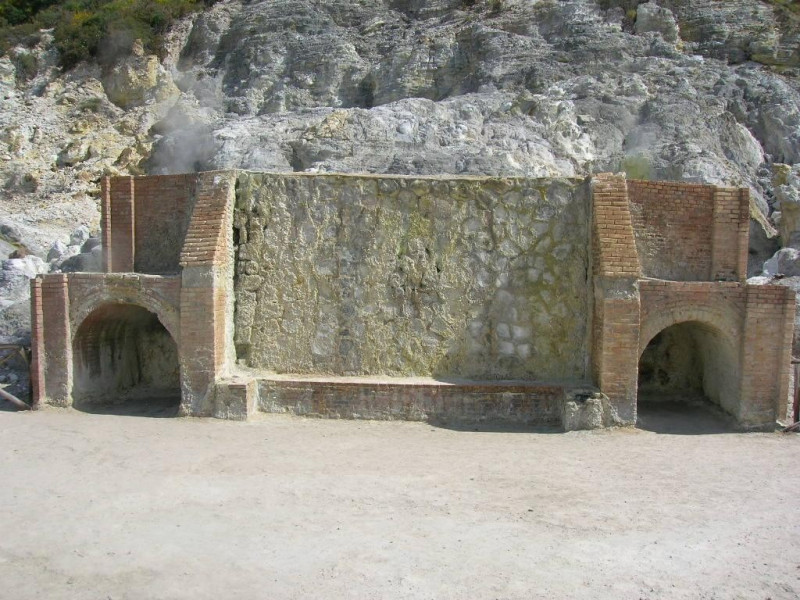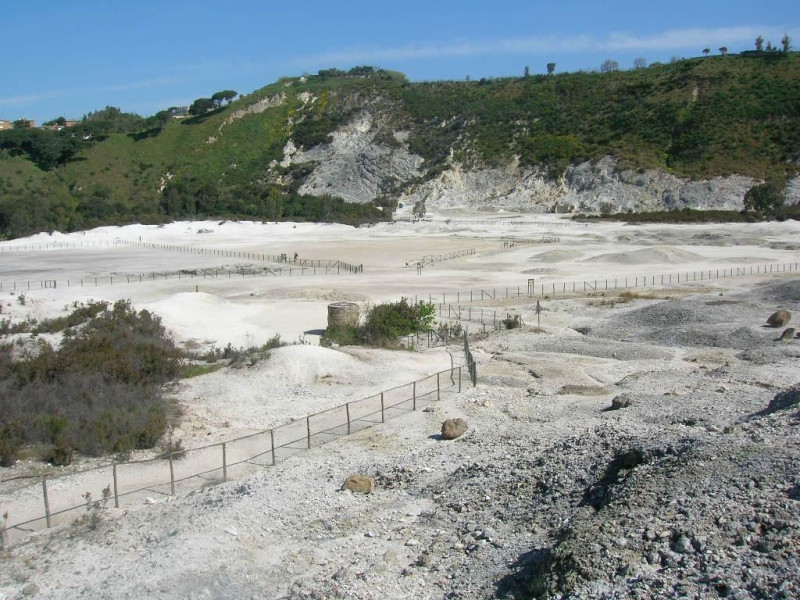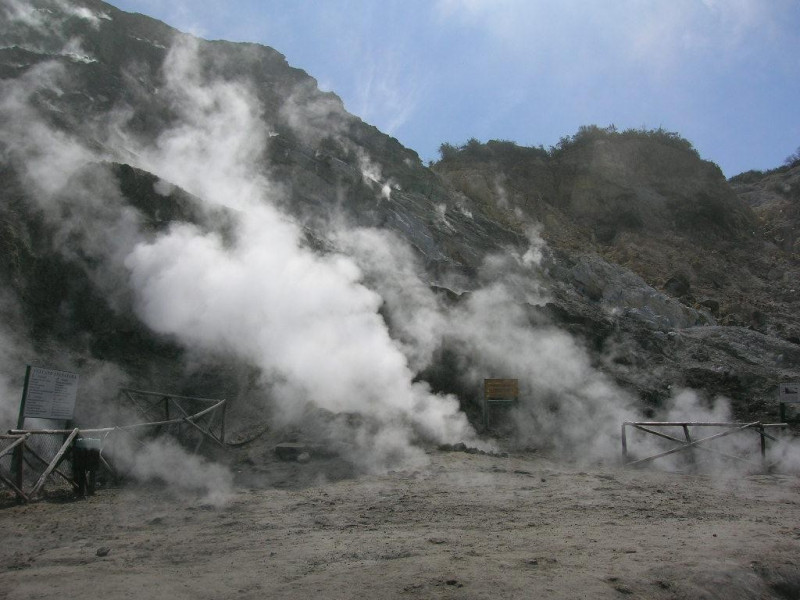Solfatara di Pozzuoli
The Solfatara of Pozzuoli is one of forty volcanoes that make up the Campi Flegrei, located three kilometers from the center of the city of Pozzuoli. It's an ancient volcanic crater, but still active in quiescent state, with fumaroles of sulfur dioxide and jets of boiling mud. The Solfatara has an elliptical shape, with a perimeter of over two kilometers. The highest part of the belt crater is called Monte Olibano, while the bottom is set at ninety feet deep. The formation of the Solfatara took place 3700-3900 years ago, already known in Roman times, is described by Strabo as the abode of God Vulcano, entrance to the underworld, and Pliny the Elder as "Fontes Leucogei". Recent excavations have unearthed a Roman road, the Via Puteolis-Neapolim, and a necropolis of the first century in the layers of eruption about 4.000 years ago. The mining activity reached its peak during the Middle Ages; in 1687 was created a factory to purify and remove the "dust of Ischia", the "red Pozzuoli", the yellow earth, the piombina, and the sulfur. Obligatory stop on the Grand Tour, the Solfatara began to be the subject of the first tours: starting from the crater counterclockwise, during the hike takes it through an oak forest to the viewpoint from which it can see the entire area; continue towards the well of thermo-mineral water, the thermal mud pit, the stone quarries of trachyte, the largest fumarole and antique stoves.



